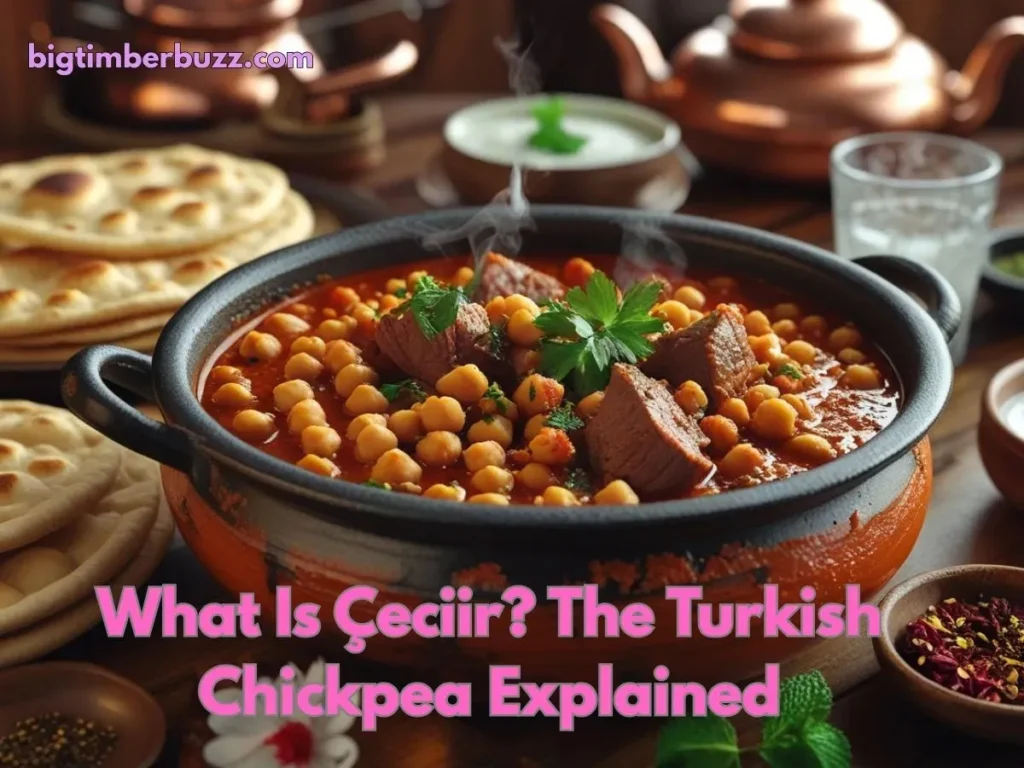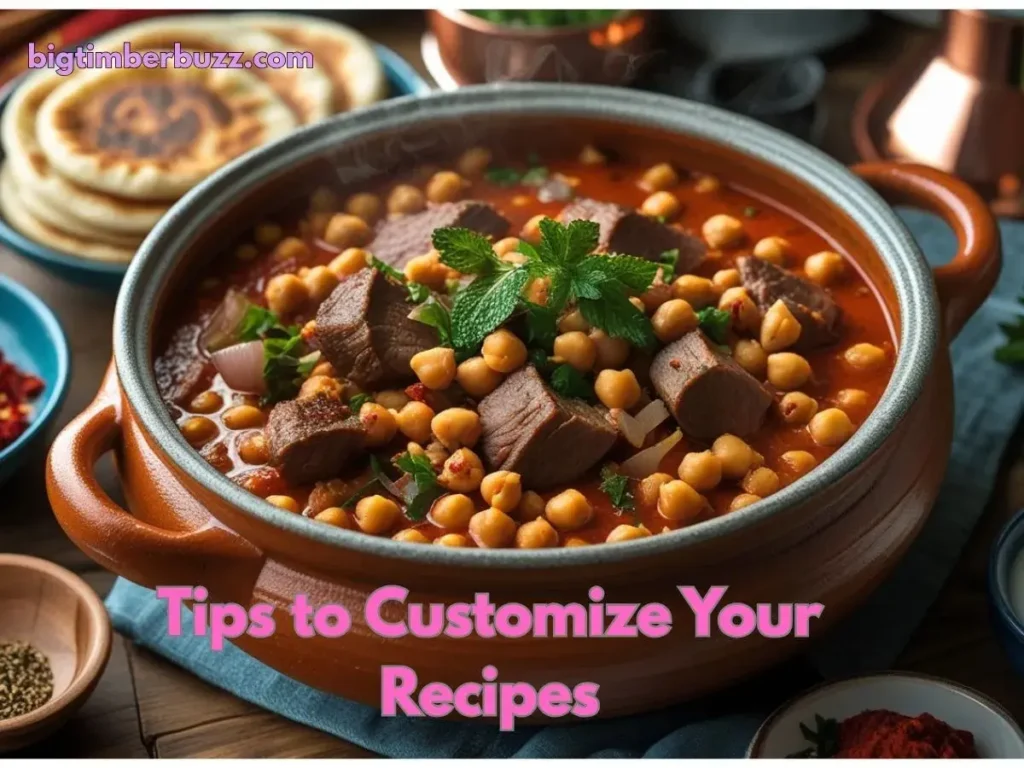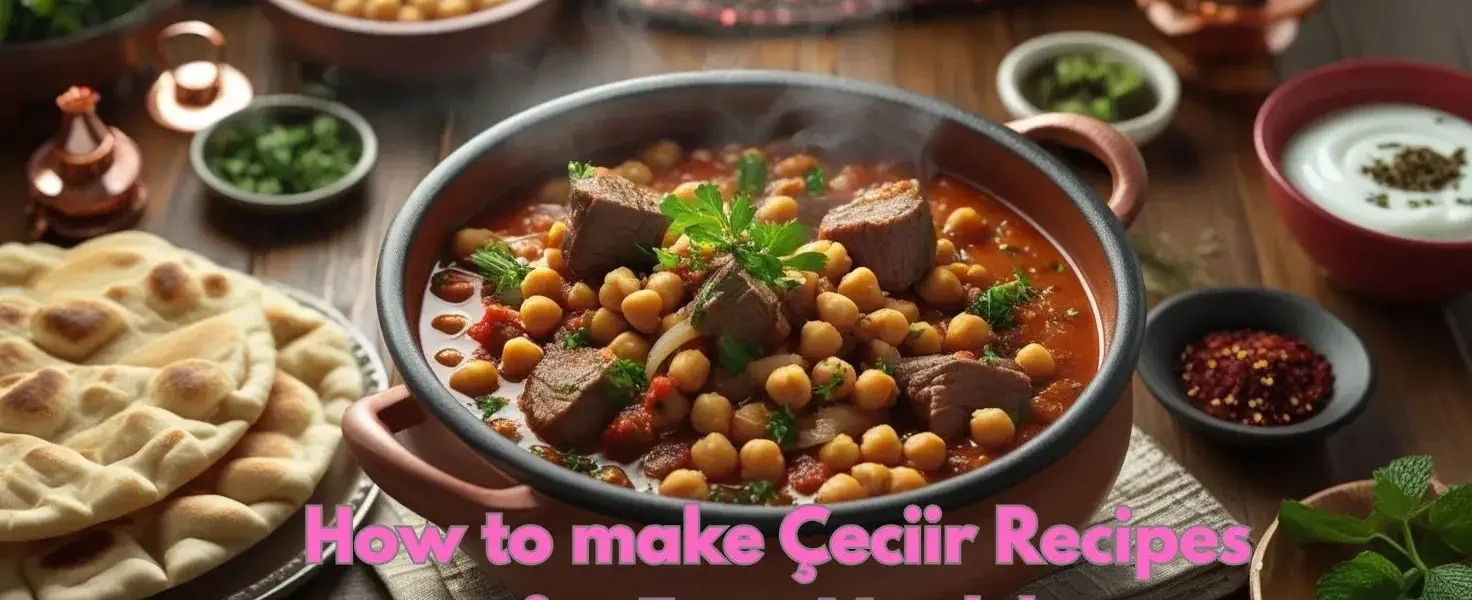Introduction
Struggling to find quick, healthy, and tasty meals? Discover çeciir, the Turkish superfood known as chickpeas, loved in Turkish cuisine and beyond.
This versatile legume transforms busy weeknights into flavorful feasts for foodies, health enthusiasts, and vegan cooks.
It’s recipes offer protein-packed, gluten-free dishes that save time and money.In this guide, you’ll get easy recipes, health benefits, and tips to make it your kitchen go-to.
Ready to explore healthy snacks and vibrant Middle Eastern cuisine? Let’s cook with this Dish!
What Is Çeciir? The Turkish Chickpea Explained

It (pronounced “cheh-jeer”) is the Turkish word for chickpeas, a staple in Turkish cuisine and Middle Eastern cuisine.
Often enjoyed as roasted chickpeas or in dishes like hummus, this boasts a rich history, from ancient Anatolian markets to modern kitchens.
Compared to leblebi (a roasted, flavored chickpea), it covers all chickpea forms. Packed with protein and fiber, it’s a nutritional powerhouse (USDA, 2023).
Its cultural significance shines in Turkish street food and festive dishes.
- Çeciir vs. Leblebi: Leblebi is roasted with specific seasonings; it is broader, encompassing both raw and cooked chickpeas.
- Cultural Role: A beloved snack in Turkey, often paired with tea or coffee.
Why People Choose it for Easy Meals?
That is your secret weapon for easy meals. This affordable and versatile legume suits busy schedules and diverse dietary needs.
A cup of chickpeas delivers 15g of protein and 13g of fiber, supporting it for weight loss and heart health (PubMed, 2021).
It’s naturally gluten-free, ideal for vegan çecii recipes, and perfect for low-carb diets with tweaks.
Canned chickpeas cut prep time, while roasted chickpeas offer a crunchy, healthy snack. From salads to dips, it elevates everyday cooking.
Why Çeciir Shines:
- Affordable: Under $2 per can at most stores.
- Quick: Pre-cooked options are ready in minutes.
- Versatile: Perfect for snacks, salads, or mains.
- Diet-Friendly: Supports vegan, gluten-free, and low-carb diets.
3 Beginner-Friendly Çeciir Recipes
Try these easy çeci recipes to bring Turkish cuisine to your table. Each is simple, vegan (or adaptable), and gluten-free, with clear steps for beginners.
Recipe 1: Crispy Roasted Çeciir Snack
Prep Time: 35 min | Servings: 4 | Diet: Vegan, Gluten-Free
Master how to make roasted chickpeas with this crunchy, healthy snack.
Ingredients:
- One can (15 oz) of chickpeas, drained
- 1 tbsp olive oil
- One tsp paprika
- ½ tsp cumin
- Salt to taste
Steps:
- Preheat oven to 400°F (200°C).
- Rinse and pat chickpeas dry with a towel.
- Toss with olive oil, paprika, cumin, and salt.
- Spread on a baking sheet.
- Bake 20–30 minutes, shaking halfway, until golden.
- Cool and enjoy!
Tip: Try chili powder for spice or honey for sweetness. Store in an airtight container.
Recipe 2: Çecii Mediterranean Salad
Prep Time: 15 min | Servings: 2 | Diet: Vegan (omit feta), Gluten-Free
This chickpea salad recipe is a fresh, fast lunch option.
Ingredients:
- 1 can (15 oz) chickpeas, rinsed
- One cucumber, diced
- One cup cherry tomatoes, halved
- ¼ cup feta (optional)
- 2 tbsp olive oil
- 1 tbsp lemon juice
- 1 tsp tahini
- Salt and pepper
Steps:
- Mix chickpeas, cucumber, and tomatoes in a bowl.
- Whisk olive oil, lemon juice, tahini, salt, and pepper.
- Toss salad with dressing.
- Add feta (if using) and serve chilled.
Tip: Prep ahead for 3-day fridge storage.
Recipe 3: Classic Çeciir Hummus
Prep Time: 10 min | Servings: 6 | Diet: Vegan, Gluten-Free
Learn how to make hummus with it for a creamy dip.
Ingredients:
- 1 can (15 oz) chickpeas, drained (reserve liquid)
- 2 tbsp tahini
- 1 garlic clove, minced
- 2 tbsp lemon juice
- 2 tbsp olive oil
- Salt to taste
Steps:
- Blend chickpeas, tahini, garlic, lemon juice, and salt.
- Add 2–3 tablespoons of reserved chickpea liquid for a smoother consistency.
- Drizzle in olive oil while blending.
- Adjust seasoning and serve with veggies.
Tip: Add smoked paprika for extra flavor.
| Recipe | Prep Time | Servings | Diet |
| Roasted Çeciir | 35 min | 4 | Vegan, Gluten-Free |
| Mediterranean Salad | 15 min | 2 | Vegan (omit feta), Gluten-Free |
| Hummus | 10 min | 6 | Vegan, Gluten-Free |
Tips to Customize Your Recipes

Personalize your recipes with these tips for how to season roasted chickpeas, storage, and dietary tweaks. Make every dish a hit!
Seasoning Ideas:
- Savory: Add garlic powder, rosemary, or za’atar for Middle Eastern cuisine flair.
- Spicy: Use chili powder or cayenne for heat.
- Sweet: Try cinnamon and honey for a unique twist.
Storage Tips:
- Keep roasted chickpeas in an airtight container for 7 days.
- Store hummus or salads in the fridge for 3–5 days; freeze hummus for 3 months.
Dietary Tweaks:
- Low-Carb: Swap feta for avocado in salads.
- Keto: Use chickpea flour sparingly for flatbreads.
- Vegan: Replace feta with nutritional yeast.
Serving Ideas:
- Pair roasted chickpeas with soups or as a salad topper.
- Serve hummus with carrot sticks or pita.
These tips ensure low-carb chickpea recipes and vegan çecii recipes suit.
Health Benefits of Çeciir
That is a nutritional powerhouse, perfect for health-conscious eaters. Here’s why it’s a must for your diet, backed by science.
- High Protein: 15g per cup supports muscle growth (USDA, 2023).
- Rich in Fiber: 13g per cup aids digestion and is used for weight loss.
- Low Glycemic Index: Stabilizes blood sugar, offering ideal health benefits for individuals with diabetes (PubMed, 2021).
- Nutrient-Dense: Iron, magnesium, and folate boost heart health.
| Nutrient | Amount per Cup | Benefit |
| Protein | 15g | Muscle growth |
| Fiber | 13g | Digestion, satiety |
| Iron | 4.7mg | Energy |
| Magnesium | 79mg | Heart health |
It is naturally gluten-free and perfect for a vegan diet. Consult a dietitian for tailored advice.
The Ancient Roots of this recipe in Turkish Cuisine
Çeciir, or chickpeas, boasts a rich history in Turkish cuisine, dating back thousands of years.Originating in the Fertile Crescent around 7,000 BCE, chickpeas reached Anatolia (modern-day Turkey) by 3,000 BCE, becoming a staple in ancient diets (Zohary & Hopf, 2000).
In Turkish culture, roasted chickpeas (leblebi) were sold by street vendors in Ottoman markets, often paired with tea.
It symbolizes hospitality, served at gatherings to welcome guests. Its cultural significance endures in rural traditions, where chickpeas are ground into flour for festive breads.
- Ancient Beginnings: Cultivated in Anatolia for millennia, valued for drought resistance.
- Ottoman Legacy: Leblebi vendors were a fixture in 16th-century Istanbul.
- Cultural Symbol: Offered at weddings for prosperity and community.
The history of chickpeas in Turkey reveals a legacy of sustenance and tradition, making it a beloved ingredient today.
Çeciir’s Global Journey: From Anatolia to the World
From its Anatolian roots, it spreads across the globe, shaping Middle Eastern cuisine and beyond.
By the Middle Ages, trade routes carried chickpeas to Europe, India, and North Africa, influencing dishes like hummus and chana masala.
In Turkey, it starred in soups and stews, while Spanish explorers introduced it to the Americas in the 16th century (Albala, 2017).
Today, it shines in vegan and gluten-free diets worldwide, from falafel to chickpea pasta. Its cultural significance bridges continents, uniting food lovers.
- Trade Routes: Silk Road merchants spread chickpeas to Asia and Europe.
- Global Dishes: Key to hummus (Middle East), socca (France), and chana (India).
- Modern Appeal: Fuels plant-based trends in 2025’s culinary scene.
Its journey underscores its timeless role in global kitchens.
Loved these easy Çeciir recipes? Discover more mouthwatering, time-saving meals at Big Timber Buzz! Explore our full recipe collection and make every meal a moment to remember.
Conclusion
Çeciir, the heart of Turkish cuisine, transforms your kitchen with its easy recipes that are healthy and delicious.
From crunchy roasted chickpeas to creamy hummus, these healthy snacks deliver protein, fiber, and flavor for busy foodies and health enthusiasts.
Its rich history, from ancient Anatolia to global tables, adds cultural charm to every bite. Whether you’re vegan, gluten-free, or just craving quick meals, it has you covered.
Try these recipes, explore their nutritional benefits, and share your creations in the comments! Hungry for more Middle Eastern cuisine? Visit our blog for tasty ideas. Make it your go-to ingredient today!
FAQs
What is çeciir?
Turkish term for chickpeas, used in snacks or dishes like hummus.
Is it the same as leblebi?
Leblebi is a roasted chickpea variety that includes all types of chickpeas.
Are çeciir recipes gluten-free?
Yes, chickpeas are naturally gluten-free.
How do I store roasted çeciir?
In an airtight container for up to 7 days.
Can çeciir help with weight loss?
Yes, fiber and protein promote fullness (PubMed, 2021).








